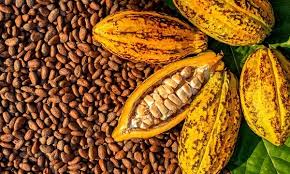Ghana’s cocoa industry is once again under the spotlight as the 2025 Cocoa Barometer raises red flags over persistent farmer poverty, inequitable value distribution, and weak sustainability enforcement despite improved macroeconomic conditions and record global cocoa prices.
The report, compiled by a coalition of civil society groups and research institutions, says while inflation and exchange rate stability have brought some relief, most Ghanaian cocoa farmers remain trapped below the living income line.
“Cocoa producers continue to shoulder the highest risks yet capture the least returns,” it observes, adding that Ghana and Côte d’Ivoire which jointly produce more than 60 percent of the world’s cocoa retain less than six percent of the industry’s total value.
The Barometer attributes this imbalance to the structure of the global cocoa trade, where multinational chocolate companies and traders dominate pricing power.
“A fair price must move from rhetoric to reality,” it insists, warning that even initiatives like the Living Income Differential (LID) cannot deliver meaningful change without greater transparency and stronger farmer representation in price-setting decisions.
It also underscores the urgency of addressing productivity challenges, ageing farms, and climate stress, while calling for the expansion of domestic cocoa processing to help Ghana capture more value locally.
“Value addition within producing countries must be treated as an economic imperative, not an optional goal,” the report says.
Beyond pricing, the document points to rising environmental pressures. Illegal mining locally known as galamsey continues to threaten cocoa-growing regions, destroying farmlands and contaminating water bodies.
The Barometer cautions that unchecked environmental degradation could permanently damage Ghana’s production capacity and global reputation for sustainable sourcing.
To avert this, it recommends a coordinated policy response combining stronger land governance, incentives for sustainable farming, and tighter collaboration with development partners to restore degraded cocoa landscapes.
The findings present an urgent call for policymakers to pair Ghana’s macroeconomic recovery with deep reforms that ensure prosperity reaches the country’s most critical producers its cocoa farmers.
Meanwhile the Government of Ghana on October 2, 2025 announced a significant increase in the producer price of cocoa for the 2025/2026 season, raising the price from GHS3,228.75 to GHS3,625 per bag.
This represents a 12.27% increase and translates to GHS58,000 per metric tonne, up from the earlier GHS51,660 per tonne.
cnr



